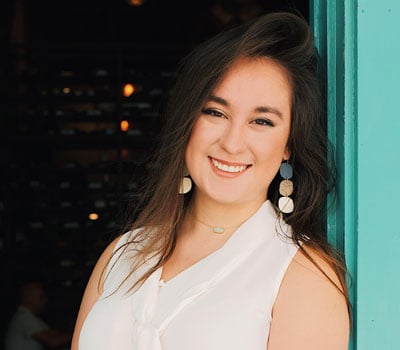

When Molly Brown started out at Helen Food & Wine, she didn’t know much about wine. “I had a leg up, actually; there was nothing to undo,” she says. The all-Greek wine list—a first in Houston—may have been challenging, but Brown absorbed everything she could from Evan Turner, who’d originally created the restaurant as a paean to the country’s wines. Brown has now been in charge of the list for three years, helping Houstonians get on a first-name basis with Greek wines.
On Retsina
The older crowd will call for Retsina. I have somebody who buys cases of Kourtaki Retsina for their home. I pour it only by the glass, and it’s not listed. But Retsina’s having an awesome moment: The Greeks are figuring out how to grow savatiano well, and making versions [of retsina] with assyrtiko; they are also making it in Macedonia instead of Athens—in that more continental climate, you get beautiful acids. The pine is different [in Macedonia], too: the flavor isn’t as hot and sappy. So when someone asks for a classic Kourtaki Retsina, they can have that, but I can also show them a clean, delicate version or a funky biodynamic one.
Santorini
The price point isn’t as exciting anymore, but people are still willing to purchase it; everybody’s been to Santorini and knows about assyrtiko. And nobody who isn’t actually Greek is asking for assyrtiko from Macedonia or anywhere else. Sometimes people hang on to the variety as a reference point: “I like assyrtiko and I’m looking for something around this price point; what else do you have?”
On Ageable Greeks
People see an older vintage and think, “Oh, that must be very good.” I came into these wines [Megas Oenos 2014, Glinavos Vlachiko 2013, Bairaktaris Old Monolithos Nemea 2013] seemingly by accident; maybe the distributors couldn’t sell through them, so I was able to buy them; I don’t know. But all of these wines can easily age 10 years, even 20 and beyond. The quality is so high now, the wines so well structured, with tight tannins and good acids, that they age beautifully.
How did the Biblinos, a red from a yet-unnamed grape variety from Biblia Chora in Pangeon, end up being your best new success?
Our wine list is all Greek, and I don’t like to list international varieties, so you can’t cheat and say, “Here’s a cabernet; we’ll just have that.” You have to talk to the somm. Our server Sarah is in love with vlachiko and will sell it to any table she talks to. The Biblinos: I have to give it up to one of my servers. He was a new hire, and this wine has the most interesting story. He took it and ran with it; he sold more this year than anyone.
People are forced to be open here; a few regulars won’t even ask for the wine list anymore; they just say, “I like what you gave me last time; surprise me.”
What Greek region are you most excited about right now?
Mantinia. Moschofilero is such an elegant grape, and living in Houston, where it’s so hot and humid—yesterday it was eighty degrees—moschofilero is like ambrosia. It has this perfect smell of white flowers and jasmine, of the sidewalk after it rains; it brings me this sense memory that reminds me of good times in my life. It gives me this synesthesia: when I taste it, I see this beautiful lilac. And I love all the different ways it can be made: You can play with skin contact, and make it big and meaty, or produce a light, delicate white. And then you have sparkling wines. The Tselepos sparkling [moschofilero] is also some of my favorite stuff.
is W&S’s editor at large and covers the wines of the Mediterranean and Central and Eastern Europe for the magazine.
This story appears in the print issue of jan 2019.
Like what you read? Subscribe today.
















